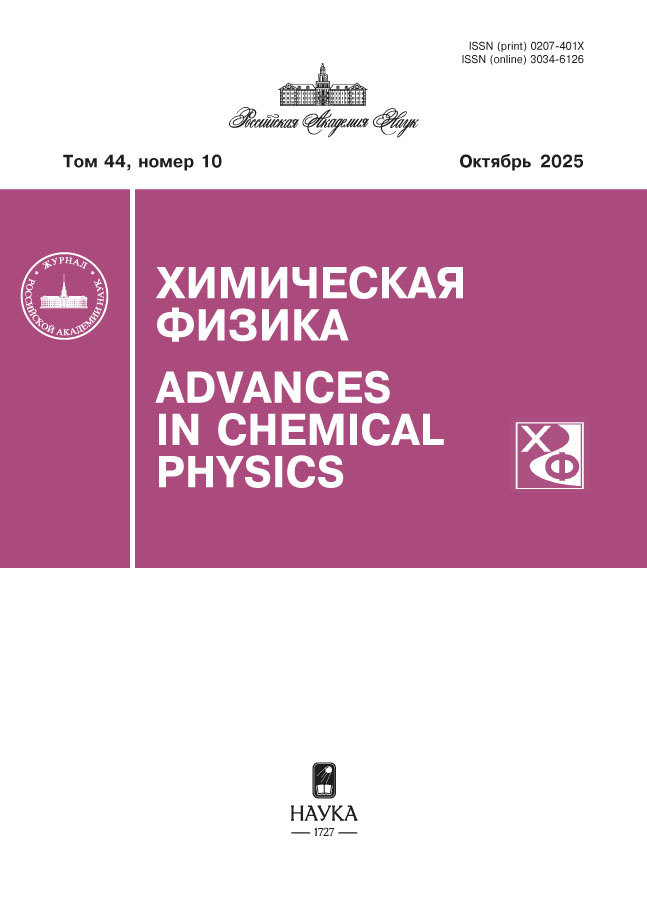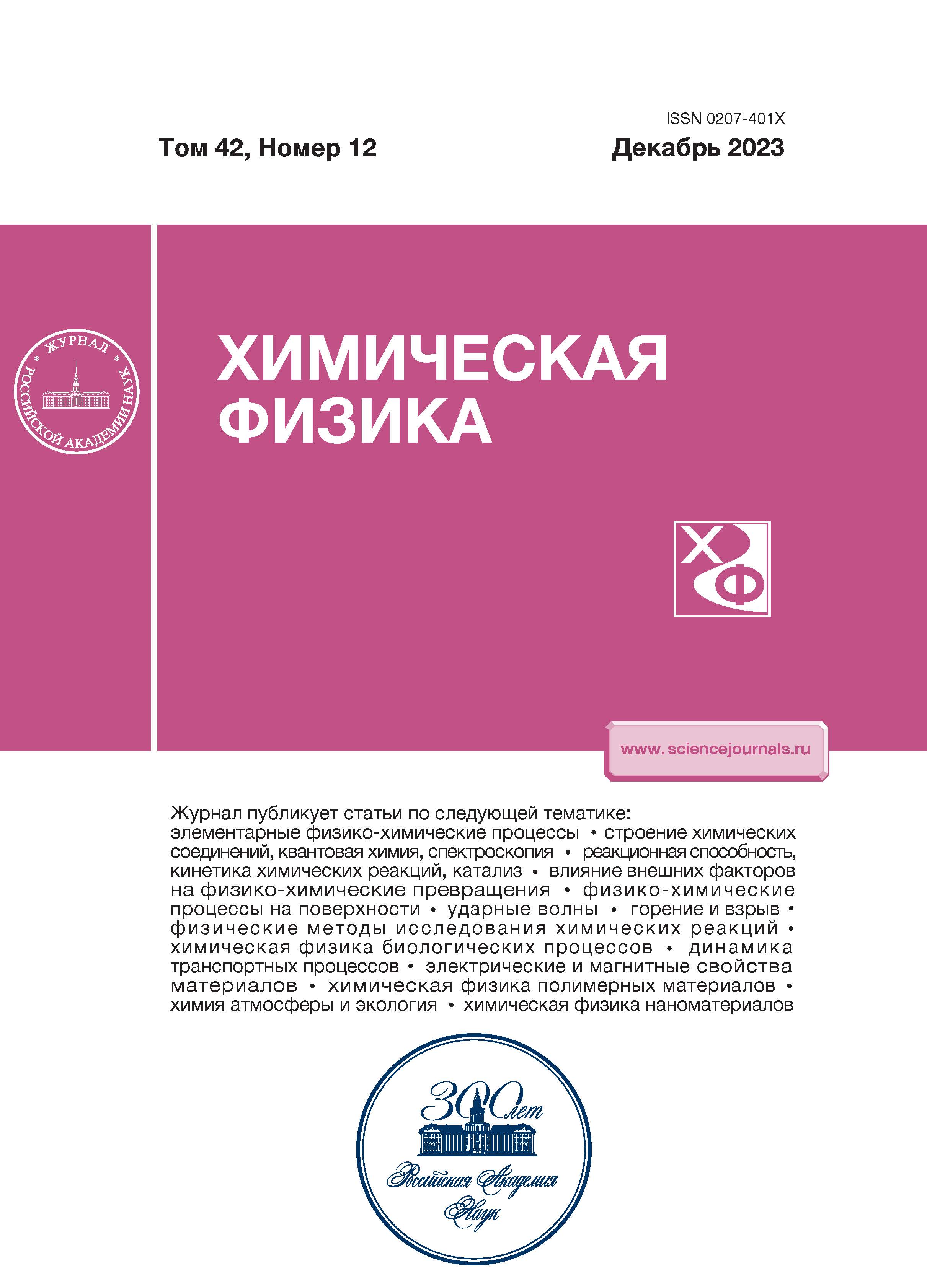Электростатический механизм формирования гибридных структур на основе наночастиц золота и катионного порфирина
- Авторы: Поволоцкий А.В.1, Солдатова Д.А.1, Лукьянов Д.А.1, Соловьёва Е.В.1
-
Учреждения:
- Институт химии Санкт-Петербургского государственного университета
- Выпуск: Том 42, № 12 (2023)
- Страницы: 70-74
- Раздел: Химическая физика наноматериалов
- URL: https://cijournal.ru/0207-401X/article/view/675014
- DOI: https://doi.org/10.31857/S0207401X23120087
- EDN: https://elibrary.ru/QTFPLH
- ID: 675014
Цитировать
Полный текст
Аннотация
Исследовано взаимодействие в водном растворе катионного порфирина с наночастицами золота, покрытыми полимерными оболочками с положительным и отрицательным потенциалом поверхности. Установлены критерии формирования гибридных молекулярно-плазмонных наноразмерных структур, основанные на определении механизма тушения флуоресценции по Штерну–Фольмеру и изменении формы спектра флуоресценции порфирина. Установлено влияние знака электрокинетического потенциала наночастиц золота на процесс формирования гибридных молекулярно-плазмонных наноразмерных структур за счет электростатического взаимодействия.
Об авторах
А. В. Поволоцкий
Институт химии Санкт-Петербургского государственного университета
Email: alexey.povolotskiy@spbu.ru
Россия, Санкт-Петербург
Д. А. Солдатова
Институт химии Санкт-Петербургского государственного университета
Email: alexey.povolotskiy@spbu.ru
Россия, Санкт-Петербург
Д. А. Лукьянов
Институт химии Санкт-Петербургского государственного университета
Email: alexey.povolotskiy@spbu.ru
Россия, Санкт-Петербург
Е. В. Соловьёва
Институт химии Санкт-Петербургского государственного университета
Автор, ответственный за переписку.
Email: alexey.povolotskiy@spbu.ru
Россия, Санкт-Петербург
Список литературы
- Lascu A., Birdeanu M., Taranu B., Fagadar-Cosma E. // J. Chem. 2018. V. 2018. P. 1; https://doi.org/10.1155/2018/5323561
- Kundu S., Patra A. // Chem. Rev. 2017. V. 117. P. 712; https://doi.org/10.1021/acs.chemrev.6b00036
- Yang J., Peng Y., Li S. et al. // Coord. Chem. Rev. 2022. V. 456. P. 214391; https://doi.org/10.1016/j.ccr.2021.214391
- Тертышная Ю.В., Лобанов А.В., Хватов А.В. // Хим. физика. 2020. Т. 39. № 11. С. 52; https://doi.org/10.31857/S0207401X20110138
- Yanagi R., Zhao T., Solanki D. et al. // ACS Energy Lett. 2022. V. 7. P. 432; https://doi.org/10.1021/acsenergylett.1c02516
- Zhang S., Geryak R., Geldmeier J. et al. // Chem. Rev. 2017. V. 117. P. 12942; https://doi.org/10.1021/acs.chemrev.7b00088
- Povolotskiy A., Evdokimova M., Konev A., Kolesnikov I., Povolotckaia A., Kalinichev A. // Springer Ser. Chem. Phys. 2019. V. 119. P. 173; https://doi.org/10.1007/978-3-030-05974-3_9
- Клименко И.В., Градова М.А., Градов О.В., Бибиков С.Б., Лобанов А.В. // Хим. физика. 2020. Т. 39. № 5. С. 43; https://doi.org/10.31857/S0207401X20050076
- Romera C., Sabater L., Garofalo A. et al. // Inorg. Chem. 2010. V. 49. P. 8558; https://doi.org/10.1021/ic101178n
- Schulz S., Ziganshyna S., Lippmann N. et al. // Microorganisms. 2022. V. 10. P. 858; https://doi.org/10.3390/microorganisms10050858
- Liu X., Atwater M., Wang J., Huo Q. // Colloids Surf., B. 2007. V. 58. P. 3; https://doi.org/10.1016/j.colsurfb.2006.08.005
- Ou Z., Yao H., Kimura K. // Chem. Lett. 2006. V. 35. P. 782; https://doi.org/10.1246/cl.2006.782
Дополнительные файлы















